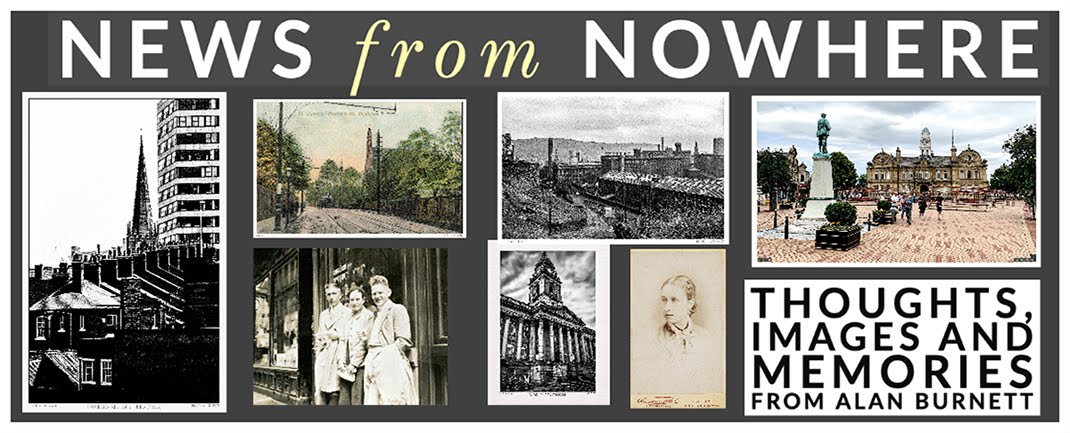The thing about playing around with old, lost and forgotten photographs is that it provides a vigorous workout for the imagination. It is like a well equipped gym of thoughtfulness set inside a state of the art flight of fancy simulator. You can look at a picture that stopped time a century or more ago and let your mind sketch in whatever detail it desires. The person is happy, the person is sad; the person is rich, the person is poor; the person goes on to lead a full and happy life, the person gets run over by a tram as they leave the photographers' studio: any narrative is potentially possible. And occasionally, just occasionally, through some combination of luck and "big data", you get to check out your imagined narrative against reality.
This is a small Victorian Carte de Visite of a young girl which was taken in the Carnarvon studios of the photographer Hugh Humphreys. It shows a sad looking young girl aged about ten years old and a first guess would suggest that it must have been taken in the 1880s. However, look carefully on the reverse of the CdV and you find that some kind soul has written a name - Mary Dagmar Sillar. And what a name: if it had been Jane Smith or Mary White, you might have had difficulty; but Mary Dagmar Sillar - there's something to get your data-hungry teeth into.
Mary Dagmar Sillar was born in Lewisham, London in 1873, the second daughter of John Charles Sillar and his wife, Jane Ellen Jones. Her father was a tea broker and worked in the City of London buying and selling tea on the international markets: a job which no doubt allowed a comfortable lifestyle for himself and his family. Tragedy arrived in young Mary's life when she was just two years old and her mother died aged just 26. The response of most Victorian fathers to such events - which were not uncommon in an age when childbirth was a perilous activity - was to find another wife and stepmother double quick: but John Charles Sillar did not follow that particular route, he moved his small family to North Wales to live with their maternal grandmother.
It is in this period that Mary had her photograph taken, and the sadness in her eyes reflects the sadness of her short life. A second tragedy struck in 1895 when she was just 22 years old and her father died. By the turn of the century Mary and her sister Gwen were living in a boarding house in Colwyn Bay in North Wales. No occupation is listed in the census returns and therefore we can assume they had what at the time were called "independent means".
Both sisters disappear from the records by the time we get to the 1911 census, but by 1914 they are back again, and Gwen is getting married to, presumably, a cousin Ernest Gemmil Sillar who is a tea planter. Mary - by now in her early 40s and still unmarried - is one of the witnesses at the wedding. We catch a final glimpse of Mary in 1939 - at the time of the pre-war 1939 Register - when she is living in retirement with her sister and brother-in-law in Hailsham, Sussex. Finally we get a clue as to what she has been doing all her life because her occupation is listed as a retired "poultry and bee expert"! The final record available is that of her death in 1963 at the age of 90.






Family was so essential then. I like to think it still is.
ReplyDeleteWhat a great, and real, story of Mary's life. Yes, I play in genealogy all the time, trying to find an occupation here, and there maybe figuring out how the next door neighbor had the same surname but not the same parents, how many cousins there must have been! Good sleuthing, Alan!
ReplyDeleteI really love this story, what a sweetheart she looks in that photo. I too love doing research on certain postcards and I've found some really fascinating stuff.
ReplyDelete